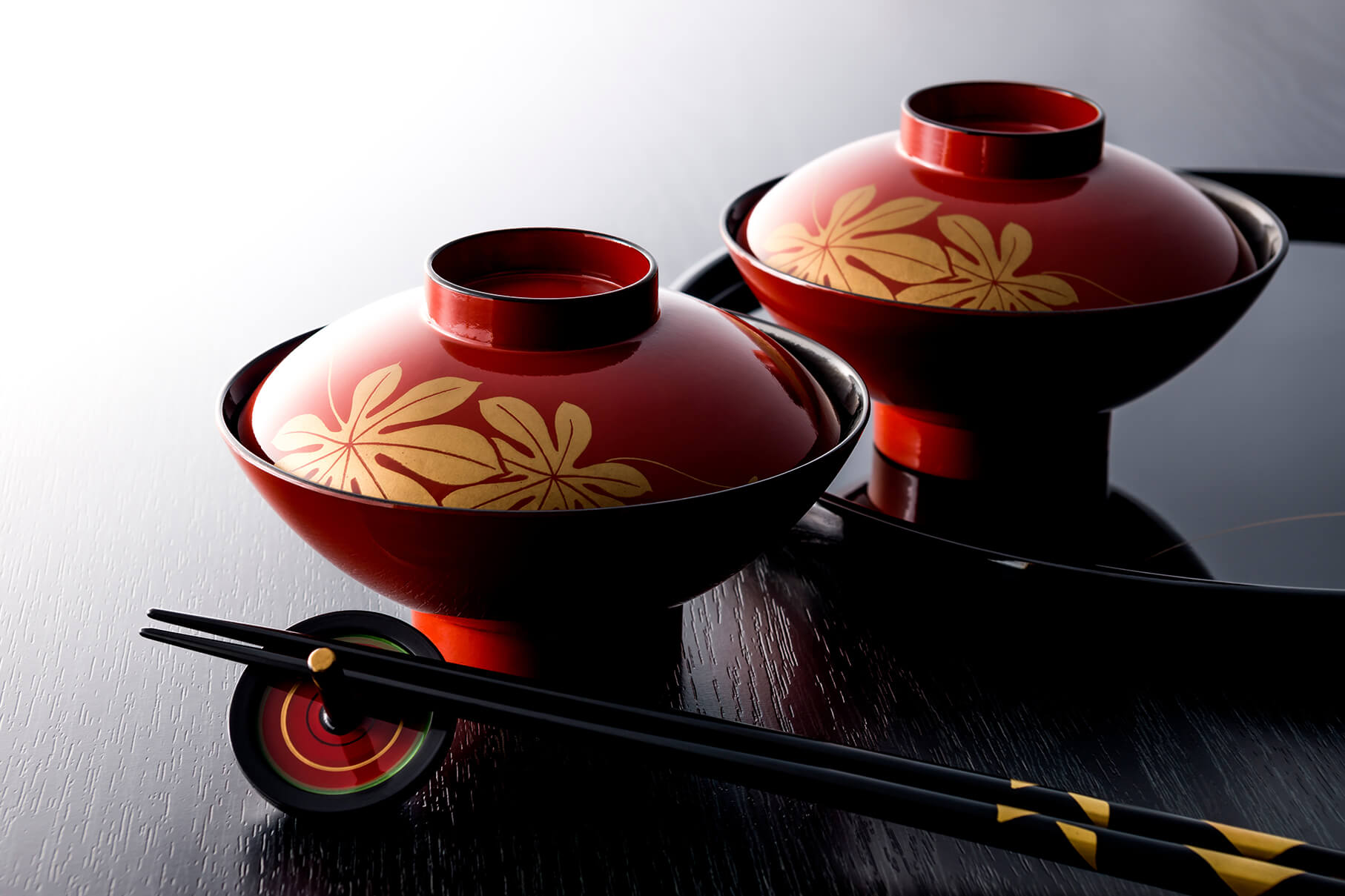
Lacquerware – or shikki – is a form of decorative craftwork that has been in use in Japan for thousands of years. Usually applied to wooden materials (though it can be used on paper, basketry, and leather items, too), this natural lacquer provides a protective and heat-resistant shell for the item in question. Over the centuries, design elements were added to the lacquerware products, creating beautiful items inlaid with gold-dust and gold leaf, as well as coloured woods and metals. Japanese lacquerware was also originally known as 'Japan' in a similar way Chinese ceramics are referred to as 'China'.
Japanese lacquerware is truly beautiful, with many examples being found in museums around the world, demonstrating the skill of the individual craftsmen and women involved. Mass-produced lacquerware is also popular, both in Japan and abroad, being a stylish and attractive alternative to plastic or resin-coated items.
In Japanese cuisine, many serving and dining bowls are produced using the lacquerware method. The heat-resistant qualities of the lacquer ensure that food remains piping hot, while the diners’ hands are protected from the heat.
Credit: Japanese lacquerware | WikipediaHistory
Archaeological evidence has shown that lacquer was being used as a protective coating in Japan since at least 7000 BCE. Artefacts from a site in Hokkaido, included ornaments that had been woven with a lacquered red thread, dating back to the early Jōmon period. Later artefacts (also discovered in Hokkaido, though at a later dig) included earthenware items painted with a coloured lacquer. These early examples of lacquered tableware were found to be over 3200 years old.
Japanese lacquer
Japanese lacquer is produced using the sap of the urushi tree (Rhus vernacifera), also known as the Japanese varnish tree, or simply the lacquer tree. This tree grows across Southeast Asia, mainly in Japan and China. In its natural state, this sap is highly toxic, both to the touch and if inhaled. This, combined with the small amounts of sap that can be harvested at any one time, is why urushi lacquer is so highly-prized.
After harvesting, the sap is stored for 3-5 years, before being treated, filtered, and dehydrated to remove any impurities. This results in a transparent resin with a texture similar to honey. This resin can then be tinted in brown, green, yellow, black, or red.
Applying lacquer
While most mass-produced lacquerware applies the urushi mechanically, traditional crafters would do so with a sable-hair brush. Once applied, the lacquer needs to be dried under precise conditions. This includes a humidity level of 75-80% and a temperature of 25-30°C. Each layer needs to be dried before successive layers are added. In a typical piece of lacquerware, you can expect to find three layers: an undercoat, a middle-coat, and a final coat. However, some bespoke pieces can incorporate several more layers.
Decorating lacquerware
There are several ways to decorate lacquerware items. These include setting different materials such as gems and metals into the wood prior to applying the lacquer, as well as painting the raw material before adding clear urushi as a varnish.
A more time-consuming, but perhaps even more beautiful, technique is to use different coloured lacquers on each layer and build up a pattern or picture that way. Clear urushi can be coloured by adding various metal minerals, with red and black lacquers being among the most popular. A full undercoat of black urushi is applied first, to act as a backdrop. Once dried, successive layers of red urushi are added to create the desired image. After the piece is completed, A final layer of clear urushi resin is applied as a protective layer.
Benefits of lacquered Japanese tableware
While lacquerware can comprise anything from jewellery and trinket boxes to ornamental artwork and even clothing, here at SushiSushi, we’re interested in how it complements your table. Lacquerware has several positive qualities that makes it ideal for tableware:
waterproof: because Japanese lacquerware is waterproof, you will not stain the surface of your tableware, even with highly coloured or acidic foods.Easy to clean: most lacquerware can be washed using a damp cloth and some low-alkaline cleaning solution, like everyday washing-up liquid.
lightweight: lacquerware tends to be made of wood with a lacquer coating. This makes tableware much lighter than the porcelain or ceramic alternatives.
safe to use: thanks to being lightweight, waterproof, and heat-resistant, lacquerware is very safe to use, even by the elderly, infirm, or very young children.
Popular Products
These are just some of the Japanese lacquerware products and variations that prove particularly popular at SushiSushi. Click on a link to learn more, or visit our online store for more Japanese lacquerware products.
Yasuragi Wooden Effect Miso Soup Bowl
While many Japanese lacquerware bowls have the traditional black and red colour scheme, this attractive and practical miso soup bowl has gone for a more rural approach. The result is a natural wooden effect that fits into any home or restaurant.
Imperial Palace Bronze Luxury Bento
This stunning lacquerware bento needs to be seen to be truly appreciated. Reassuringly weighty, it has a beautiful design on the bronze metallic lid, applied in exquisite detail. A luxury piece of lacquerware.
Yasuragi Lacquerware Miso Bowl and Lid
This beautifully-finished lacquerware miso soup bowl has a black interior with a copper-coloured brush stroke effect on the outside of the bowl and lid. Whilst commonly used for serving miso soup, it can double up as a serving bowl for any number of small side dishes.
Our Suppliers
Here at SushiSushi, we source our Japanese lacquerware from some of the most well-respected and established producers in Japan. These include:
Fukui Craft
The first company in the lacquerware industry to achieve ISO9001 accreditation, Fukui Craft has always been recognised for the quality of its products. They create beautiful soup bowls, serving bowls, plates, trays, cups, and more, combining traditional methods with modern mechanisation techniques.











